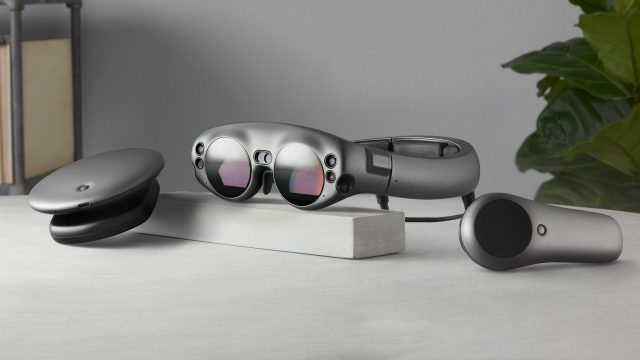Magic Leap is one of the most well-funded startups in history, boasting $2.6 billion in overall funding—and that’s before calculating its latest financing round, the amount and specifics of which are still unknown at this time. A new report from The Information however alleges that the company has seen sluggish sales of its Magic Leap One AR headset, something that reportedly only sold 6,000 units in the first six months following its August 2018 launch.
The Information maintains CEO Rony Abovitz internally claimed he wanted to initially sell one million units of the $2,300 headset in its first year of production. Abovitz reportedly later reduced that number to 100,000 units.
Even at the low side of 100,000 units, that’s in the neighborhood of how many Oculus Rift DK2s were shipped globally, which at the time of launch in 2015 cost nearly one-sixth of the price of ML One.


According to the report, Magic Leap is also now prototyping a second headset, which is said to include 5G connectivity, a wider field of view, and a smaller and lighter form factor. The report claims however this second iteration has been could be stymied by “fundamental technology constraints,” making a hardware refresh a possible outcome.
Furthermore, The Information maintains both Alphabet CEO Sundar Pichai and former Qualcomm exec Paul Jacobs stepped down in 2018 from the board at Magic Leap. Pichai is said to have left due to “the demands of his schedule,” replaced by Google Maps VP Jennifer Fitzpatrick, while Jacobs was ousted from Qualcomm for his attempt to take the company private.
When asked for comment, a Magic Leap spokesperson told Engadget that The Information report was “littered with inaccuracies and misleading statements, and erroneously portrays Magic Leap’s operations, internal plans and overall strategy.”
In apparent response to the report, Abovitz also took to Twitter, saying that he’s “very realistic about each step we (and all others) need to take each year [to make AR mainstream].”
Some of this talk of sales numbers undoubtedly comes down to how Magic Leap positions their technology. Although it’s labeled a ‘Creator Edition’ headset, which is ostensibly targeted at developers, the company has made some overt bids to appear consumer-facing, as the company makes exclusive deals with major telecoms such as AT&T and Japan’s NTT DOCOMO, and it releases polished (and likely expensive to fund) second-party apps on their burgeoning app store, Magic Leap World.
The store isn’t just a collection of developer examples, but it’s rather a curated platform that has both a selection of free and paid apps from big names including Weta Workshop’s Dr. Grordbort’s Invaders, ILMxLABS’ Project Porg, Rovio’s Angry Birds First Person Slingshot, or Insomniac Games’ paid app Seedling. You can even now listen to Spotify on ML One.
In short, nobody would be focused on sales numbers if the company had followed a more conventional release cycle; i.e. launch a purposefully unsexy developer kit with little to no marketing, build hype at trade shows by teasing a better, more refined version of the product with better specs, release the new product as the true 1.0 once you’ve got a solid set of useful apps on your store. Meanwhile, you can either heavily subsidize the product to make it more appealing to indie developers, or provide alternate hardware available so devs don’t have to weather the full cost of a $2,300 device.
Regardless of the report’s claims, Magic Leap has clearly decided to approach the problem of kickstarting the AR headset product segment in its own unique way, something their unprecedented amount of cash has allowed them to experiment with. However now with Apple, Microsoft, and Facebook heavily invested in AR, Magic Leap will need a real win here soon if it plans to compete with the established powers in tech for what looks to be an interesting next decade ahead of us to say the least.

